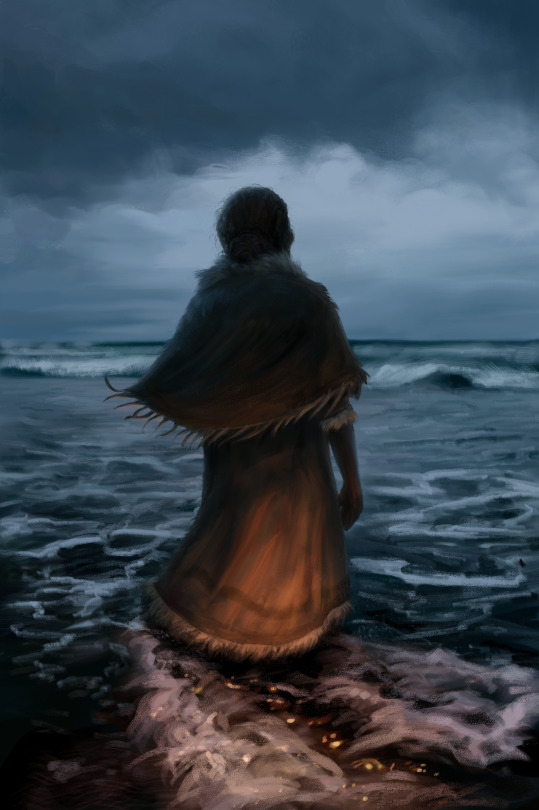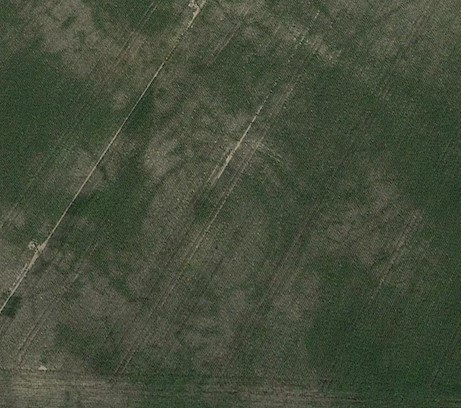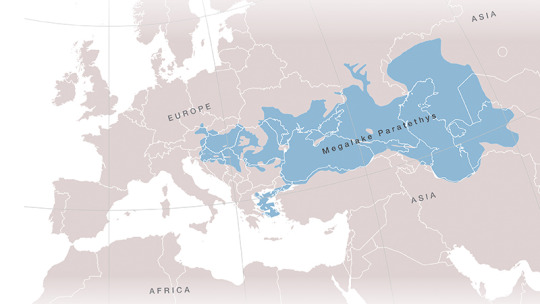#prehistoric europe
Text

VERGE OF THE WIDER SEA -
My Paleolithic character Nisse at the edge of the western ocean.
[old art]
#paleoblr#paleolithic oc#paleoart#gravettian#aurignaican#My art#stone age#landscape#Prehistoric oc#prehistoric europe#art#artwork#digital art#prehistory#original character art#original character#nisse
3K notes
·
View notes
Photo




polish roundels (aka circular neolithic enclosure in Central Europe)
Drzemlikowice, Oława, Tylice, Nowe Objezierze
#neolithic#prehistory#stone age#archaeology#prehistoric europe#rondels#roundels#neolithic circular enclosures in central europe#stroked pottery culture#lengyel culture#earthworks#central europe#poland#archeology#my upl
102 notes
·
View notes
Text

Doggerland: The Europe That Was
#16000 bc#8000 bc#7000 bc#doggerland#dogger bank#prehistoric europe#ice age#northern europe#western europe#northwest europe#stone age
0 notes
Text

Walk at Dusk (Man Contemplating a Megalith) by Caspar David Friedrich
Possibly a self-portrait
#caspar david friedrich#art#romantic#landscape#romanticism#megalith#megalithic#megaliths#stone#monument#prehistoric#prehistory#europe#european#nature#self portrait#portrait#allegorical#allegory#crescent moon#moon
721 notes
·
View notes
Text

The rise and fall of the world's largest lake
The ancient Paratethys Sea once held more water than all of today’s lakes combined.
When continental plates smashed together about 12 million years ago, they didn't just raise new mountains in central Europe—they created the largest lake the world has ever known.
This vast body of water—the Paratethys Sea—came to host species found nowhere else, including the world's smallest whales. Two new studies reveal how the ancient body of water took shape and how surrounding changes helped give rise to elephants, giraffes, and other large mammals that wander the planet today.
To build that timeline, paleo-oceanographer Dan Palcu of the University of São Paulo and his colleagues at the main campus assembled clues from geological and fossil records. At its largest, the body of water—which some scientists consider to have been an inland sea—stretched from the eastern Alps into what is now Kazakhstan, covering more than 2.8 million square kilometers.
That's an area larger than today's Mediterranean Sea, they write this week in Scientific Reports. Their analyses further estimate the lake once contained more than 1.77 million cubic kilometers of water, more than 10 times the volume found in all of today's fresh- and saltwater lakes combined...
Read more: https://www.science.org/content/article/rise-and-fall-world-s-largest-lake
130 notes
·
View notes
Text
In Orígens Geopark (in the Western Pyrenee mountains of Catalonia), the most recent remains of dinosaurs in Europe were found.
The park territory includes a wide representation of the evolution of life on Earth, comprising deposits from the Silurian to the Paleogene, about 400 million years represented by fossils of vertebrates, invertebrates and plants.
Some of the findings include Silurian graptolite fossil remains, Devonian marine fossils that record the extinction of organisms such as trilobites, Permian and Triassic footprints of reptiles and amphibians as well as plant fossils, and magnificent fossils of insects, marine invertebrates, plants, vertebrates (such as amphibians, small reptiles and even feathered birds) from the Lower Cretaceous. Soft parts of the body are often preserved, as well as rare coloration patterns.
It is worth mentioning the remains of the first flowering plants (Montsechia vidalii), which appeared on the planet about 130 million years ago and were described from these outcrops in 1902 by Charles René Zeiller.

Montsechia vidalii found in Orígens Geopark, High Pyrenees, Catalonia.
#orígens geopark#paleontology#història#catalunya#dinosaurs#geology#natural park#fossils#prehistoric#dinosaur#botany#botanical#science#palaeoblr#palaeontology#prehistoric animals#plants#travel#europe
86 notes
·
View notes
Text

Boys at a prehistoric rock carving from the Bronze Age (1800–500 B.C.) in Stora Herrebro, Norrköping (Borg), Östergötland, Sweden, 1924. Swedish National Heritage Board.
60 notes
·
View notes
Text
Evolution of Style.
#fashion#style#ancient civilizations#modern times#Prehistoric Age#Ancient Egypt#Ancient Greece#Ancient China#Medieval Europe#Renaissance#Baroque#Rococo#Victorian Era#Edwardian Era#16th century#17th century#18th century#19th century#20th century#1500s#1600s#1700s#1800s#1900s#2000s#2077#evolution#Ancient Rome
40 notes
·
View notes
Text
#!!!!#nonbinary#queer history#europe#prehistoric#prehistory#gender#gender variance#gender diversity#bend the binary
58 notes
·
View notes
Photo

European prehistoric melting pot
Hunter-gatherers, modern humans whose ancestors evolved in Africa, reached Europe some 45,000 years ago. By 6000 B.C. Neolithic farmers from present-day Turkey had joined them in southern Europe before pushing deeper into the continent. The Yamnaya then swept in from Russia. Most Europeans today have DNA from all three groups.
322 notes
·
View notes
Photo

Far Cry Primal (2016)
#2016#gaming#Far Cry Primal#Far Cry#Primal#Takkar#Sayla#Batari#Wenja#Tensay#Ull#Oros#Carpathian Mountains#Central Europe#Stone Age#prehistoric
79 notes
·
View notes
Text

Oase 2
Based off the Kennis & Kennis reconstruction
#my art#watercolor#art#prehistory#oase#oase 2#aurignaican#prehistoric europe#carapithians#Paleoart#paleoblr
36 notes
·
View notes
Photo


neolithic figurine of a ram, found in Jordanów Śląski
Funnelbeaker Culture, 2500 BC
32 x 37 x 12 cm
#neolithic#prehistory#archaeology#prehistoric europe#funnelbeaker culture#ritual object#zoomorphic figurine#figurine#artefact#ram#sheep#domestic sheep#husbandry#ceramic#my upl
131 notes
·
View notes
Text
the fact that a 1100 year old political maneouvre combined with a shallow understanding of genealogy is such a huge part of modern wh1te n4ti0n4list identity politics is both hilarious and frustrating to someone who yknow studied the era
#hey guys Cambridge is right there IS no such thing as Anglo Saxons !!#no one in acedemia has used the term without a huge amount of qualifiers for 30 years at least#sorry to tell you but the English identity was made up to justify reconquering the Danelaw#i REALLY think the commonplace genetic testing and the fundamental misunderstanding of genetic origin it created isnt helping either#sorry to tell you again but Britain has always been a mixing pot :))#modern genetic study of Britain is something i read about just anyway because the origin of culture and language here is interesting to me#and its deep and rich and full of prehistoric influx from across europe#so yknow#anyway today im mad about this and right wing people who piss themselves about not being Anglo Saxon are pathetic#rory's ramblings
11 notes
·
View notes
Text

Stonehenge, 2 May 1816 by Francis Etheridge
#francis etheridge#art#stonehenge#wiltshire#england#salisbury plain#megalithic#megalith#prehistoric#neolithic#structure#monument#bronze age#stones#british isles#britain#europe#european#clouds
125 notes
·
View notes
Text

"The so-called "Venus of Kostenki" was recovered from one of the Paleolithic sites on the Don River in Russia. Several figurines from this area share the same traits and indicate a single goddess who is encountered not just in Russia but throughout prehistoric Europe and the Near East.
Her commonalities in so many figurines include the largeness of breasts, belly, thighs, and buttocks; a globe of a head with closely plated hair or more likely a knitted cap; and arms folded under breasts.
Of subtler recurrence, least often remarked upon but of signal importance, is how often her head is tipped downward, not skyward, for the afterlife is not in the sky but in her own womb, the womb of the fatted earth. She is additionally faceless, as the Goddess in her wholeness is unknowable.
This is the standard appearance of the Kostenki goddess figurines; but how nearly identical she is to prehistoric figurines from France to Israel is what startles. It is now known that a series of prehistoric societies were extremely far-ranging in their influences, amounting to a vast society of roaming hunter-gatherers.
The last of these cultures has been named the Gravettian, the mammoth hunters who built sturdy shelters of mammoth bones to stand against even Ice Age storms, or dwelt in caves or semi-underground habitations. They were not a settled culture but did have centers revisited seasonally or periodically, ritual sites or encampments along the trails of migratory animals.
Gravettian art dates from 25,000 to 20,000 BCE or older in Europe (and the Kostenki sites in use from about 37,000 BCE). This surprisingly was a unified culture that lasted a minimum of 5,000 years, with lingering elements until 17,500 BCE, and influences on the following Epigravettian era in Spain, Italy, France, the Balkans and Ukraine.
Their goddess figurines were small because a nomadic existence required portability. When the Ice Age ended, Gravettian culture begins its slow fade into settled agricultural societies, the first cities, the earliest of which still created heavy-set faceless goddess figurines."
~ Jessica Amanda Salmonson
#Venus of Kostenki#figurine#ancient ways#sacred ways#goddess#goddess figurines#Gravettian culture#Jessica Amanda Salmonson#Paleolithic#Don River#Russia#Kostenki goddess figurines#37000 BCE#Epigravettian era#Spain#Italy#France#The Balkans#Europe#Prehistoric
3 notes
·
View notes